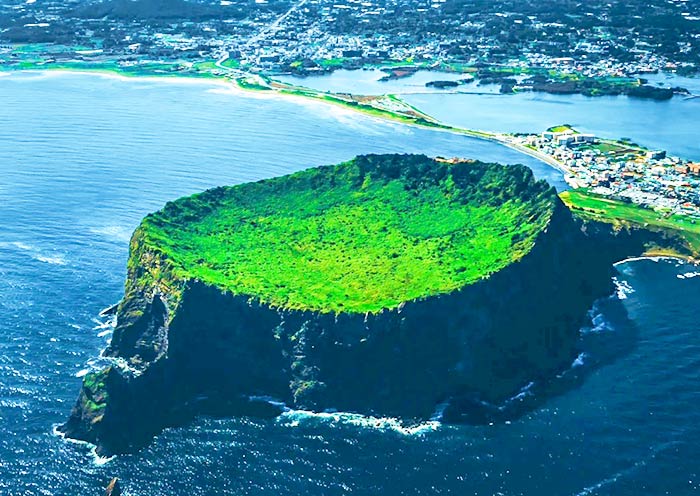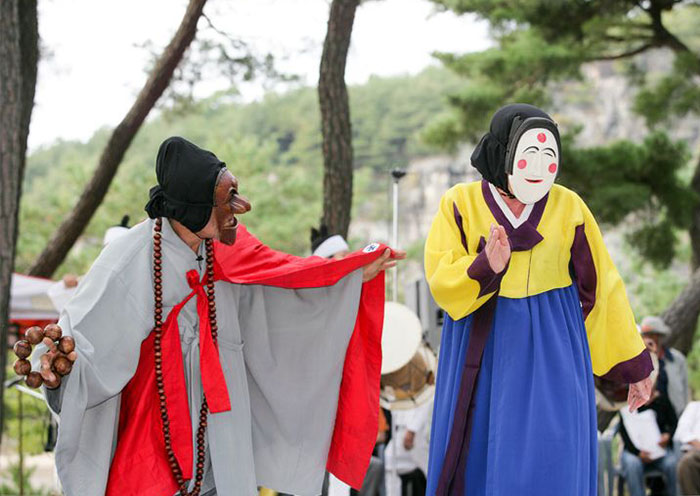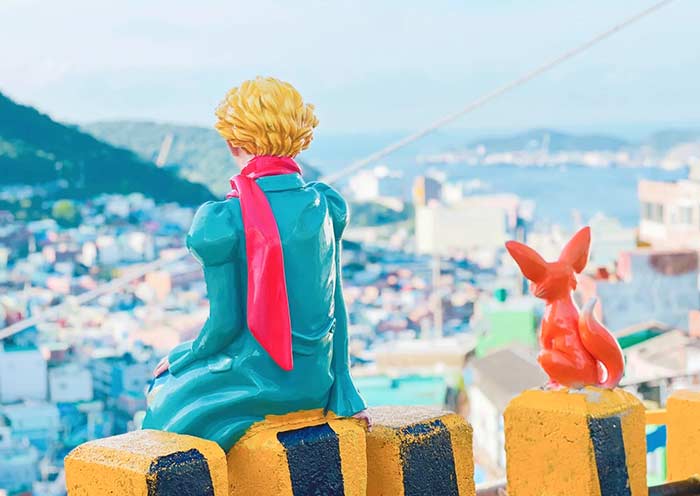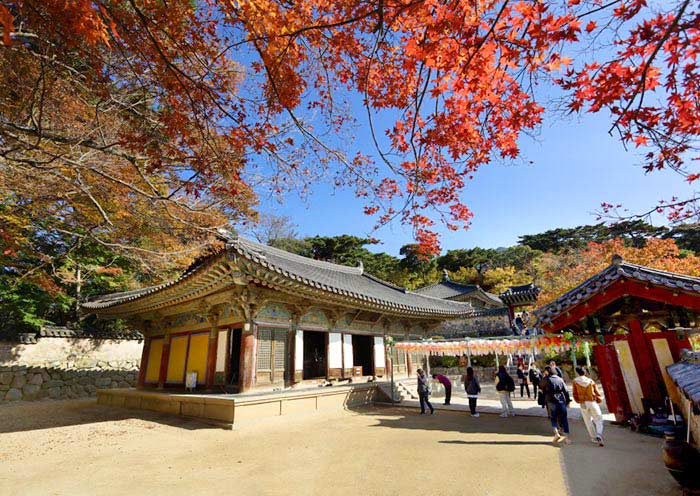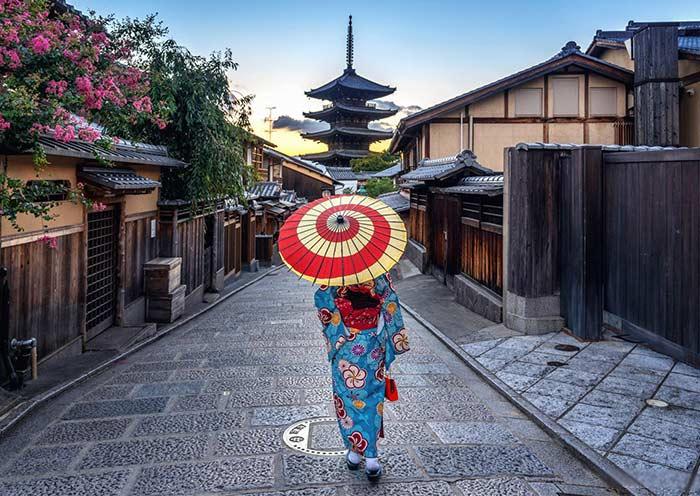Viktoriya, Paul, Larisa and Alexander
8 Days South Korea Tour from Jeju Island to Seoul: The Popular Route
- Highlights
- Itinerary
- Price
- Trip Notes
- Accommodation
- Photos
- Reviews
Explore South Korea from the Island to UNESCO Sites, Modern Cities
There are many direct flights to Jeju Island from several Asian countries. So, feel free to start your South Korea tour with Jeju Island as your first stop! Relax your body and mind at the beaches and explore the UNESCO-listed volcanic mountains.
With smooth transfers, head to the southeast part of South Korea - Busan, the second-largest city. Feel the vibrant energy, visit bustling markets, serene temples, and pristine beaches.
Then, head to the Three UNESCO Sites in Gyeongju. Explore outstanding examples of Korean Buddhist art, the history of the Silla Kingdom, and enjoy the amazing night views. Next, head north to Andong, South Korea's cultural and historical epicenter.
The last, but most important, stop is Seoul, offering a diverse experience: Korean food, traditional costumes, fashion, palaces, and local life. From nature breaks to cultural discoveries, you will experience a comprehensive South Korea.
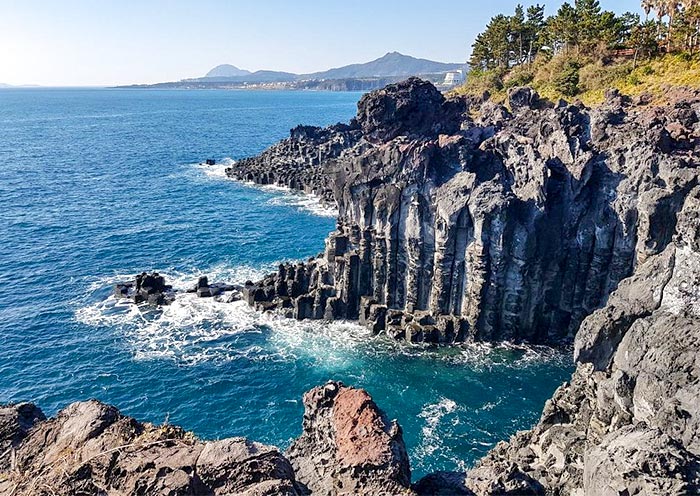
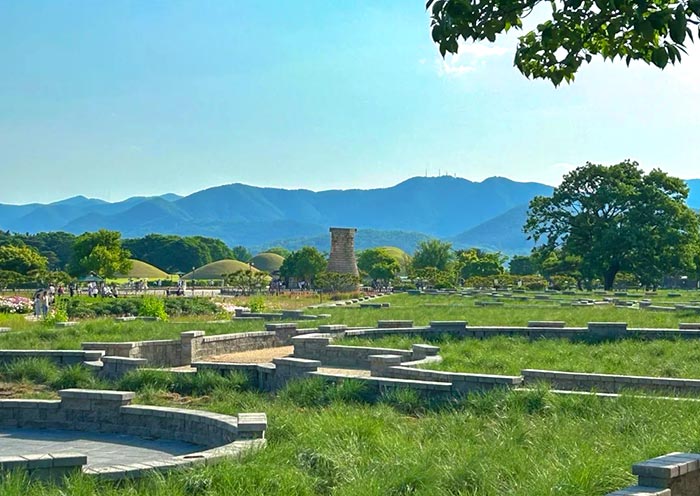
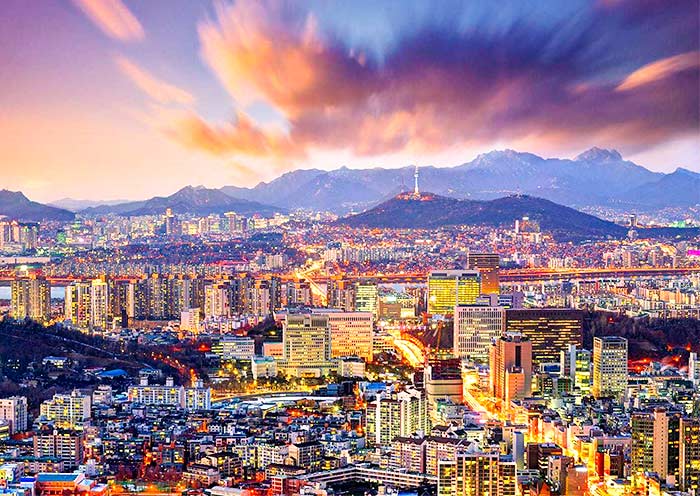
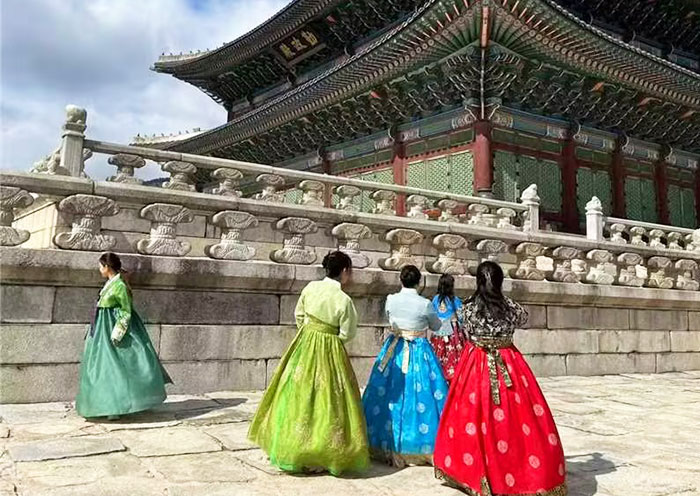
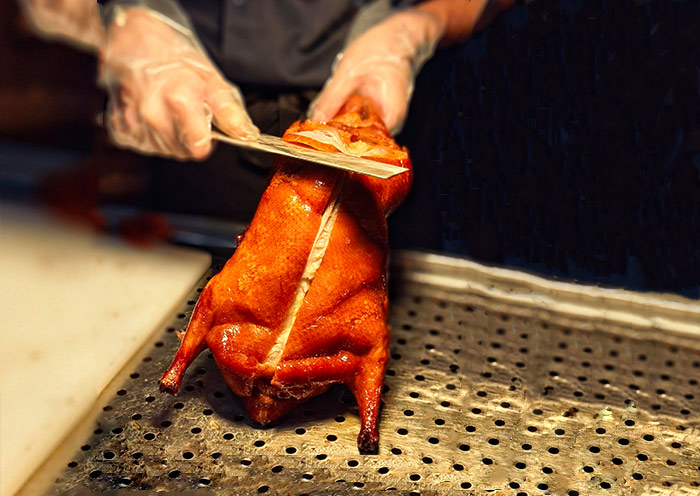
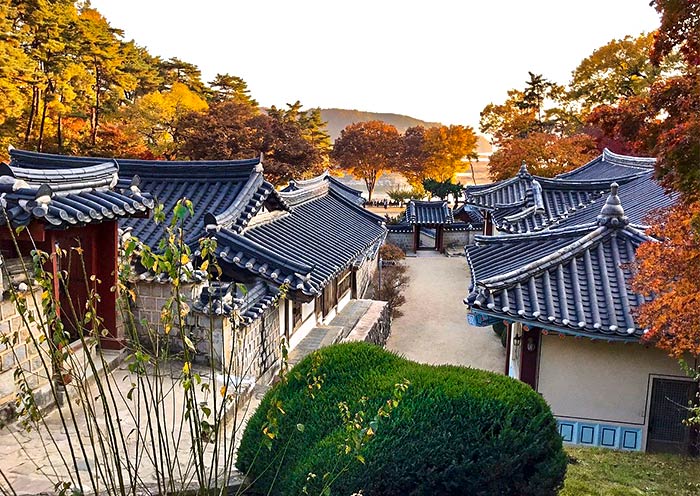
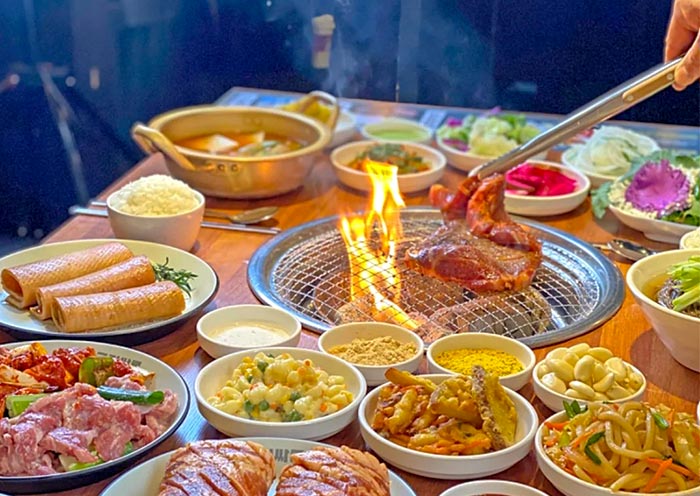
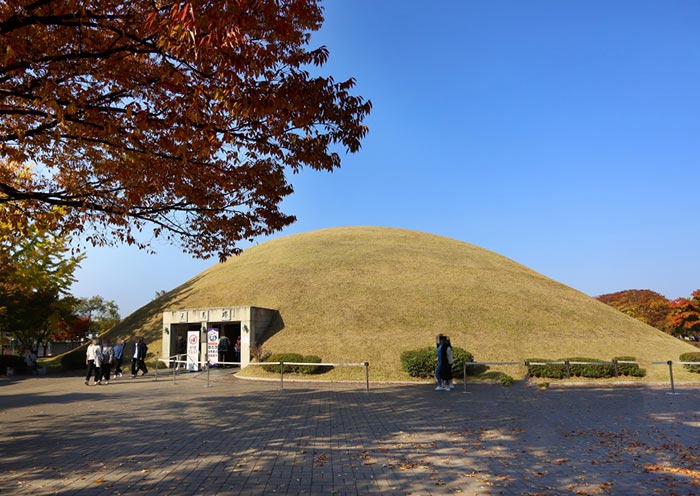
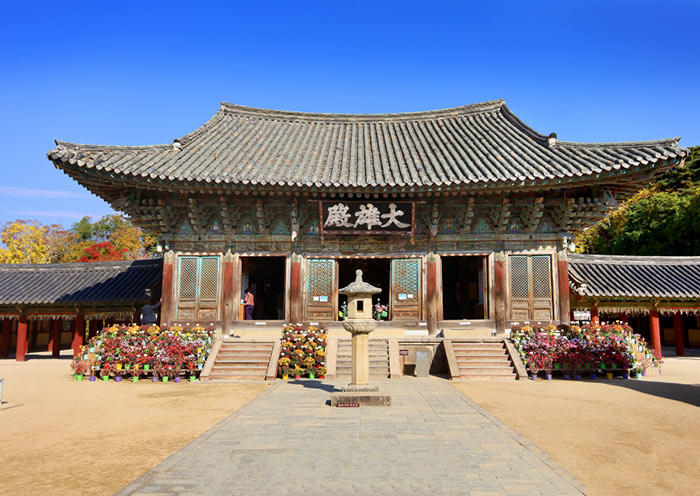
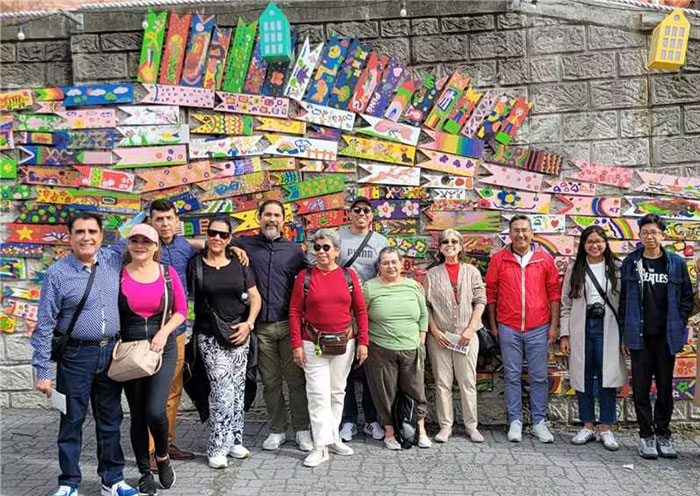
Itinerary at a Glance
Jeju Island (3 Days)
UNESCO World Heritage Site - “Jeju Volcanic Island and Lava Tubes”, East Route: Manjanggul Lava Tube, Women Diver’s Museum, Seongsan Ilchulbong, Seopjikoji Cape, Woljeongri Beach; South Route: Mt. Halla, Mt. Songaksan, Jusangjeolli Cliff, Yakcheonsa Temple, Cheonjiyeon Falls, Green Tea Farm Cafe
Busan (1 Day)
Haedong Yonggungsa Temple, Gamcheon Culture Village, Jagalchi Fish Market, Yongdusan Park
Gyeongju (1.5 Days)
Donggung Palace and Wolji Pond, Cheomseongdae Observatory, Bulguksa Temple, Seokguram Grotto, Daereungwon Tomb Complex, Cheomseongdae Observatory, Woljeonggyo Bridge
Andong (0.5 Day)
Hahoe Village, Dosan Seowon
Seoul (2 Days)
Gyeongbokgung Palace, Bukchon Hanok Village, Jogyesa Temple, Insadong Art and Antique Street, Gwangjang Food Market, Presidential Blue House (Outside View)
Itinerary Day by Day
안녕하세요! On this day, tell us your schedule and arrival time, and our guide and driver will pick you up at the airport on Jeju Island. We will escort you to the hotel and assist you with check-in. The rest of the day is free for you to enjoy the views of Jeju Island.
Jeju Island is a unique volcanic island off the southern coast of South Korea, renowned for its volcanic features, breathtaking coastlines, and opportunities for beach relaxation. It is recognized as the UNESCO World Heritage Site named “Jeju Volcanic Island and Lava Tubes”, encompassing three sites totaling 18,846 hectares. These sites include Geomunoreum, celebrated for its exceptional lava tube system featuring multicolored carbonate roofs and floors, along with dark lava walls; the fortress-like Seongsan Ilchulbong tuff cone, emerging dramatically from the ocean; and Mount Halla, the highest peak in Korea, showcasing waterfalls, diverse rock formations, and a crater filled with lakes.
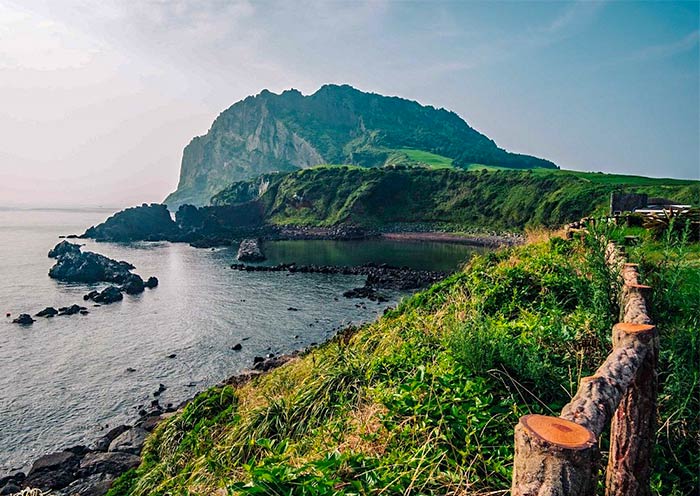
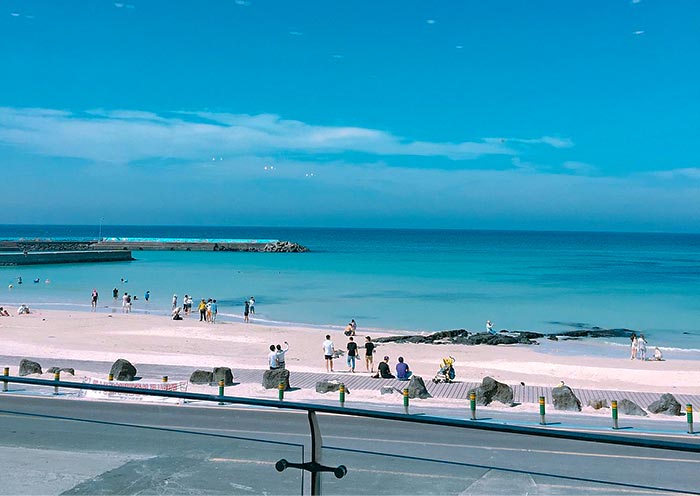
On this day, you will explore the East Route of Jeju Island. Your first stop will be the Manjanggul Lava Tube, one of the world's longest and best-preserved lava tubes, extending over 7.5 kilometers (4.6 miles). Explore the cave's fascinating rock formations, such as lava flows, stalactites, and stalagmites, offering insights into the island's volcanic past.
Next, visit the Women Diver’s Museum. Haenyeo are female divers who gather shellfish and seaweed without underwater diving equipment. These women, involved in the fishing industry, can be found throughout Jeju-do, Korea, Japan, and Russia. The Jeju Haenyeo Museum introduces visitors to the unique activities and culture of these divers, showcasing their daily lives, including traditional homes, meals, and tools.
After lunch, explore Seongsan Ilchulbong (Sunrise Peak), a UNESCO World Heritage Site characterized by its majestic tuff cone shape formed by volcanic eruptions. Located on the eastern end of Jejudo Island, the peak features a large crater at its summit surrounded by sharp rocks resembling a crown.
Later, visit the picturesque coastal area known as Seopjikoji Cape. Enjoy panoramic views of the ocean, nearby Udo Island, and the surrounding coastline. Take leisurely walks along the well-maintained trails meandering through the cape. If time allows, relax at Woljeongri Beach. Sit in a local cafe, savor the picturesque landscapes, and enjoy a coffee as the emerald-colored ocean and refreshing breeze rejuvenate you.
After the tour, be escorted to your hotel in Jeju Island.
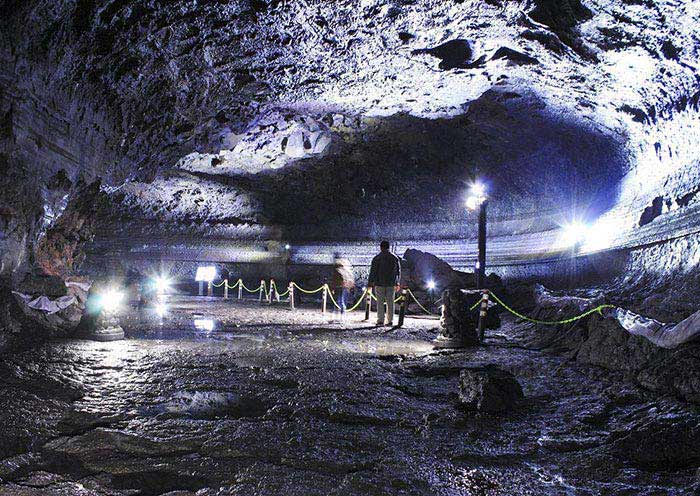

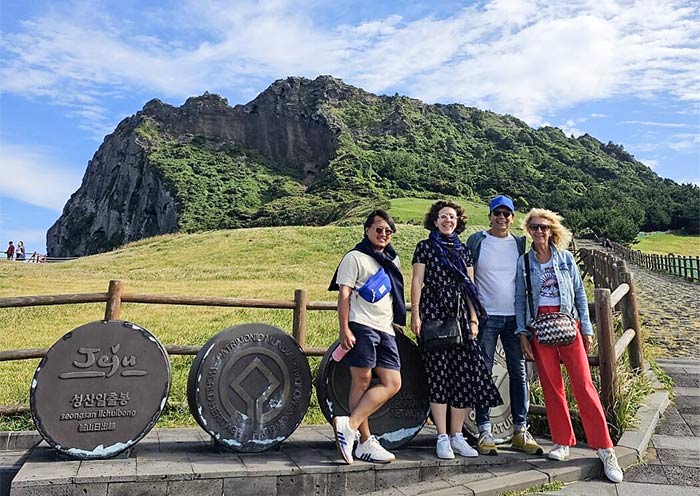

After breakfast, you will have a full day explore Jeju Island for its south route. Begin your adventure at Mt. Halla, a UNESCO World Heritage Site and the highest peak in South Korea. Hike through the Eoseungsaengak Trail, marveling at the majestic volcanic scenery and panoramic views of Jeju City.
Continue your journey to Mt. Songaksan, known for its 99 peaks and stunning coastal views. Enjoy a scenic drive along the coast and hike to the summit for panoramic vistas of nearby islands and the Pacific Ocean.
Discover the natural wonder of Jusangjeolli Cliff, a designated cultural monument. Admire the impressive hexagonal stone pillars formed by volcanic eruptions and enjoy the crashing waves of the high tide.
Immerse yourself in the cultural heritage of Yakcheonsa Temple, one of the largest temples in Korea. Marvel at the towering statue of Vairocana Buddha and explore the temple's intricate architecture.
Experience the natural beauty of Cheonjiyeon Falls, a cascading waterfall surrounded by lush greenery. Take a leisurely walk along the subtropical path and enjoy the refreshing mist and the sound of the falling water.
Conclude your day with a visit to a Green Tea Farm Cafe, where you can savor the unique flavor of Jeju Island's tea, grown in the island's volcanic soil.
After the tour, be escorted back to your hotel on Jeju Island.
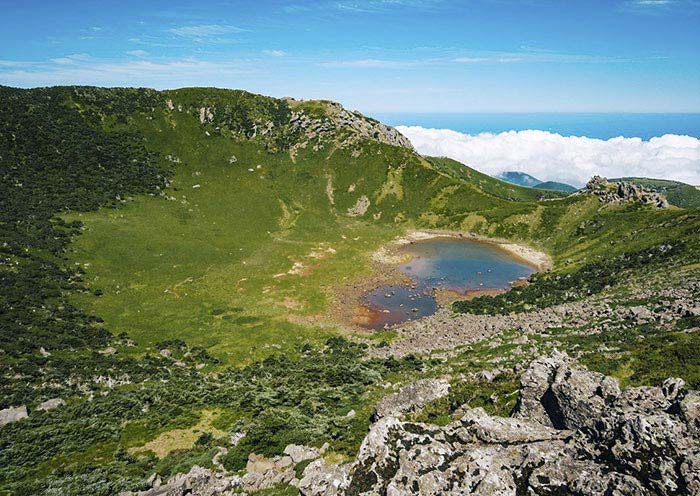

In this morning, you will take the flight from Jeju Island to Busan (about 1 hour). Busan, South Korea's second-largest city, is a vibrant coastal metropolis known for its stunning beaches, delicious seafood, and rich cultural heritage.
Upon arrival. start your tour with a visit to Haedong Yonggungsa Temple, established in 1376 during the Goryeo Dynasty. Unlike most Korean temples nestled in mountains, this temple is built on a cliff overlooking the sea, offering stunning panoramic views and a serene atmosphere. Admire the temple's intricate architecture, which blends traditional Korean design elements with modern influences. Look for the twelve zodiac signs carved into the stone steps leading to the temple. Admire the main hall, which houses a large Buddha statue and offers a serene space for meditation. Visit the Dragon King Hall, dedicated to the mythical sea dragon, and pray for good fortune. Walk across the sky bridge that connects the temple to a small island, offering panoramic views of the ocean.
After that, head to Gamcheon Culture Village, often referred to as the 'Korean Santorini'. The village is renowned for its brightly colored houses, creating a visually stunning and Instagram-worthy backdrop. Wander through the narrow alleyways and admire the beautiful murals and art installations. Walk to the famous statue of The Little Prince standing atop a hill, offering panoramic views of the village. If you'd like, enjoy a cup of coffee or tea at one of the many rooftop cafés with stunning views of the village.
Later, explore Jagalchi Fish Market and Gukje Market, the largest seafood market in South Korea. Here, you can find fresh seafood and try various seafood dishes. Gukje Market is a bustling traditional market where you can find everything from clothes to souvenirs.
In the late afternoon, visit Yongdusan Park located in the heart of Busan. The highlight of visiting Yongdusan Park is undoubtedly the breathtaking views of Busan from the top of Busan Tower. Enjoy sweeping vistas of the city, the harbor, and the nearby islands.
After the tour, be escorted back to the hotel in Busan.
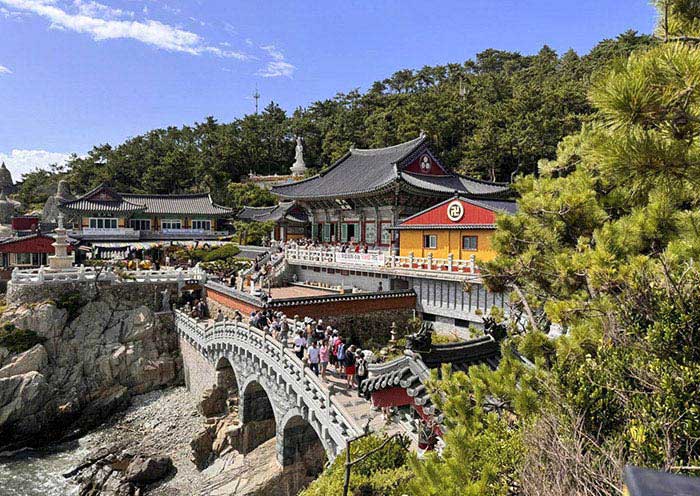
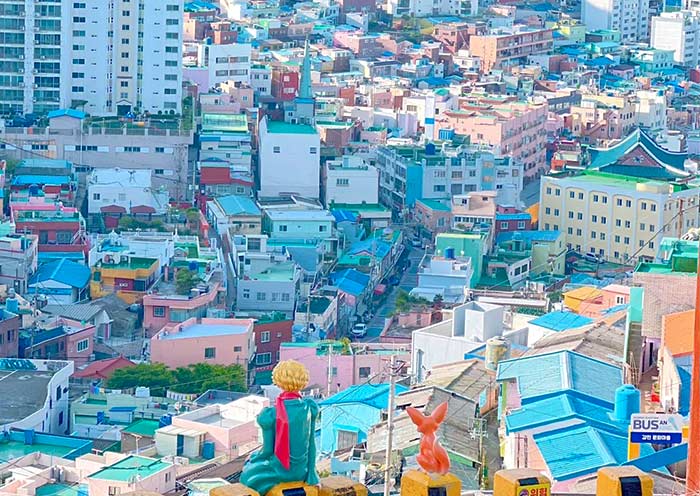
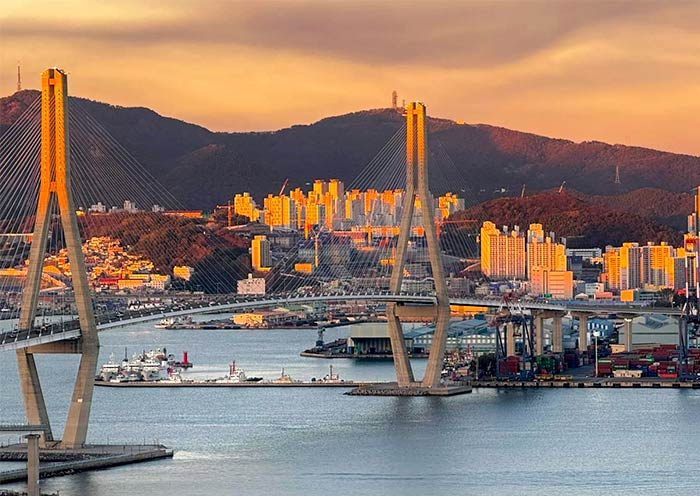
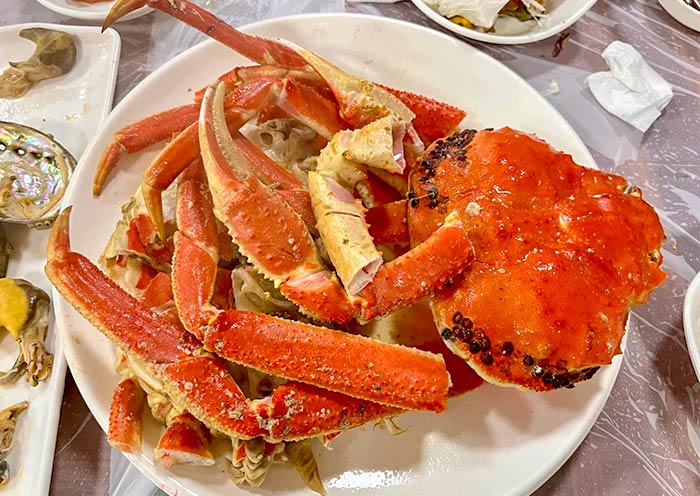
In this morning, you will be escorted from Busan to Gyeongju. Gyeongju, situated in southeastern South Korea, served as the ancient capital of the Silla Kingdom and is a UNESCO World Heritage Site. As a cultural hub, you'll have the opportunity to explore the ruins of ancient palaces, temples, and tombs, immersing yourself in the fascinating history of this once-powerful kingdom.
Upon arrival, the first stop will be Bulguksa Temple, a UNESCO World Heritage site and one of the most famous temples in South Korea. The picturesque temple complex is nestled on the slopes of Mount Toham and offers a serene environment to explore. Admire its exquisite architecture, intricate carvings, and serene atmosphere, offering a captivating glimpse into the Buddhist heritage of the Silla Dynasty. Explore the temple's highlights, including Dabeoreum Gate, Daeungjeon Hall (home to a large Buddha statue), Seokga Pagoda (a symbol of the temple), and Gyeongunjeon Hall.
From Bulguksa, venture to the nearby Seokguram Grotto, a UNESCO World Heritage site nestled on Namsan Mountain in Gyeongju. Marvel at the Giant Buddha Statue, the centerpiece of the grotto, a massive Buddha intricately carved from a single granite rock, gazing out at the East Sea. Explore the grotto's other numerous sculptures, depicting various Buddhist deities and figures. Finally, immerse yourself in the breathtaking panoramic views of the surrounding landscape. The combination of nature’s beauty and human craftsmanship makes this site truly special.
Afterward, journey through history at the Daereungwon Tomb Complex, a UNESCO World Heritage Site also known as Tumuli Park. This ancient burial ground of the Silla royal family offers a unique glimpse into the lives and customs of this bygone era. Take your time exploring the various tombs, marveling at the intricate details of their architecture and artifacts. Don't miss Cheonmachong Tomb, renowned for the discovery of the "Heavenly Horse" mural, a stunning piece of Silla art depicting a majestic horse. If time permits, extend your exploration to Gold Crown Tomb, where you'll witness the opulence of the Silla royal family through its gold crown. Finally, venture into the numerous stone chambers, each with its own distinct architecture and artifacts.
An Amazing Night Tour for This Day:
This evening, you'll take a night tour to Donggung Palace and Wolji Pond, immersing yourself in their tranquil and serene atmosphere. Explore Donggung Palace, the secondary palace built for the crown prince of the Silla Dynasty. Offering a more private and relaxed environment than the main royal palace, it served as a place of leisure and entertainment for the royal family. Stroll to Wolji Pond, also known as Anapji, an artificial pond constructed as a recreational area for the Silla royal court. Adorned with beautiful pavilions, walkways, and islands, it creates a serene and picturesque setting. Experience the magic as these attractions are illuminated at night.
Later, walk to Gyeongju Cheomseongdae Observatory, a unique historical landmark located in Gyeongju. Built during the reign of Queen Seondeok (r. 632-647), Cheomseongdae is believed to be the oldest astronomical observatory in East Asia. The observatory takes the form of a cylinder, reaching approximately 9 meters in height. It consists of 365 stones, symbolizing the number of days in a year. Marvel at the tower and get insight into the scientific advancements of the Silla Dynasty. Afterwards, enjoy a walk to Woljeonggyo Bridge, a beautifully restored wooden bridge spanning the Nakdong River in Gyeongju. Stroll across the bridge and admire the breathtaking views of the Nakdong River and the surrounding landscape.
Stay overnight in Gyeongju.
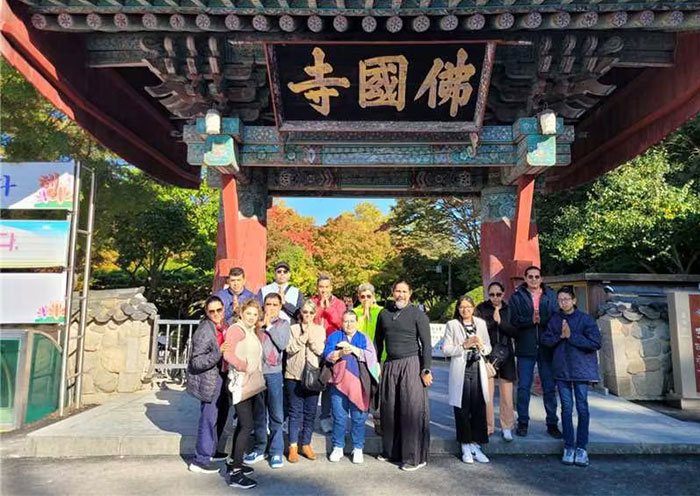



On this day, you will be driven from Gyeongju via Andong to Seoul. Along the way, you will make a stop in Andong, known as the "Home of Confucianism". It's a haven for those seeking a deep understanding of Korean traditions and a glimpse into the past.
Upon arrival in Andong, you will first explore Hahoe Village, a UNESCO World Heritage site renowned for its well-preserved traditional Korean architecture and rich cultural heritage. Explore traditional Korean architecture that has remained largely unchanged for centuries. Explore the Confucian academies and shrines in the village to learn more about the Confucian philosophy and its influence on Korean culture. Here, you can also learn about the Hahoe Mask Dance, a traditional Korean mask dance that is typically held during the Andong International Mask Dance Festival or on special occasions.
Next, pay a visit to Dosan Seowon, a renowned Confucian academy closely associated with the renowned Confucian scholar Yi Hwang (Toegye), who taught and lived here. His teachings and legacy continue to influence Korean culture and thought. The academy was established to educate and honor Confucian scholars. Wander through the courtyards and buildings, admiring the beautiful architecture and learning about the history of the academy. Pay your respects at the shrine dedicated to Yi Hwang, where you can learn more about his life and contributions to Confucianism.
After the tour, be escorted to Seoul. Seoul, is a sprawling metropolis located in the Han River basin. It's a city of contrasts, where ancient palaces, towering skyscrapers, and bustling markets coexist harmoniously. If you arrive early, explore this modern Asian metropolis at your own pace and discover how ancient traditions blend seamlessly with modernity in one of Asia's great cities.
Free Time Idea in Seoul (Explore on your own based on your time):
In the evening, experience the hustle and bustle of Seoul at Namdaemun Market. You can explore traditional Korean food, snacks, souvenirs, and accessories.
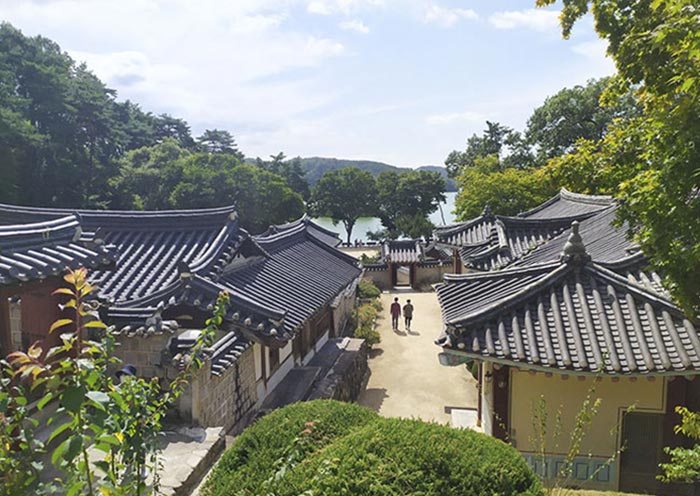
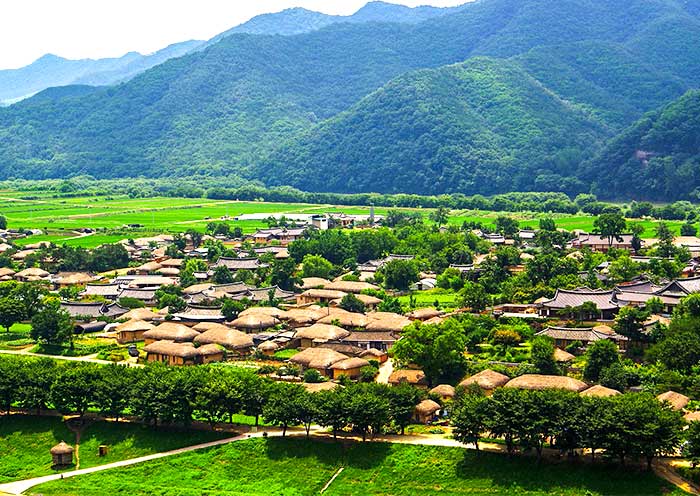
In the morning, your guide will pick you up from your hotel. Today is a highlight of your Seoul trip, featuring amazing attractions and experiences. You'll explore the grand palace, the traditional Hanok Village, and immerse yourself in the vibrant local life and culture. Plus, you'll have the chance to try typical Korean snacks.
Your first stop is the Presidential Blue House (Cheongwadae), a symbol of South Korea's political power. Take in the distinctive blue roof and modern architecture from the outside.
Next, walk to Gyeongbokgung Palace, the largest and best-preserved palace in Korea, which served as the main palace of the Joseon Dynasty. Built in 1395 by King Taejo Lee Seong-gye, this palace witnessed the rise and fall of the dynasty. Its layout is meticulous, and its architectural style is unique, representing the pinnacle of Korean architectural art. (Optional: Hanbok Rental Experience - Dress in a traditional hanbok for a journey back in time to the Joseon Dynasty. Rental fees apply on-site.) Follow the route suggested by your guide, visit Gwanghwamun, the most iconic gate, and admire the palace's architecture. Appreciate Geunjeongjeon, the heart of Gyeongbokgung Palace and symbol of the highest authority of the Joseon Dynasty. Proceed to Sajeongjeon, where grand ceremonies were held and foreign envoys were received. Explore Gyotaejeon to see the queen's living quarters. Enjoy a leisurely stroll to Hyangwonjeong, a picturesque pavilion situated on an artificial lake, offering a splendid view of the palace. (Please note: If time allows, you can take a photo with the changing of the royal guard ceremony at Gwanghwamun for a unique, historical experience. The ceremony takes place at 10:00 and 14:00, except on Tuesdays when Gyeongbokgung Palace is closed. It typically lasts about 20 minutes.)
After exploring the grand palace, let's head to enjoy the traditional Korean houses at Bukchon Hanok Village. This village is renowned for its well-preserved traditional Korean houses, known as “hanok”. Originally a residential area for the nobility and high-ranking officials of the Joseon Dynasty, Bukchon Hanok Village is characterized by its abundance of hanok. These houses feature curved roofs, wooden frames, and traditional Korean interior design. Many of the hanok have been repurposed into cultural centers, tea houses, and guesthouses, providing visitors with an opportunity to experience traditional Korean living firsthand.
Escape from the hustle and bustle, and you’ll take your time to visit Jogyesa Temple, founded in 1395. It serves as the headquarters of the Jogye Order of Korean Buddhism. At this serene and peaceful temple, you will gain a deeper understanding of Korean Buddhism and culture.
Later, get to the Insadong Art and Antique Street, which is renowned for its vibrant cultural scene and traditional Korean crafts. You’ll browse a vast array of traditional Korean art, including paintings, calligraphy, ceramics, and sculptures. And you can also catch traditional Korean performances, including traditional dance, music often held in the streets.
After that, let's dive into the bustling Gwangjang Food Market, a culinary paradise where you can savor a variety of delicious Korean street food. Indulge in popular dishes like bindaetteok (mung bean pancakes), tteokbokki (spicy rice cakes), kimbap (seaweed rice rolls), and mayak gimbap (mini rice rolls), as well as Kimchi Jeon.
After the tour, be transferred back to your hotel in Seoul.
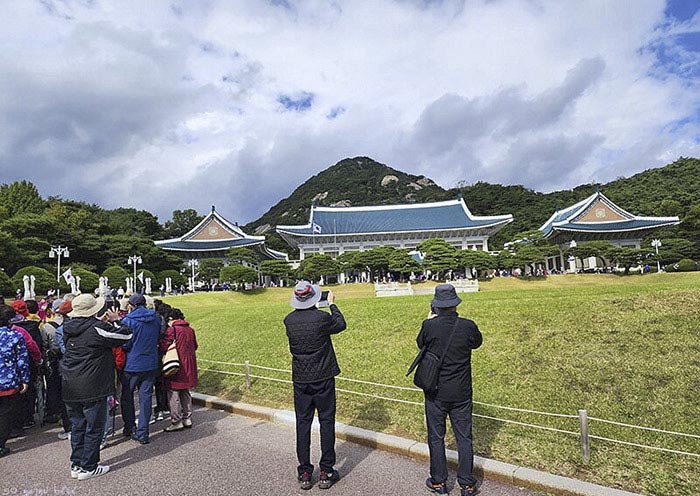
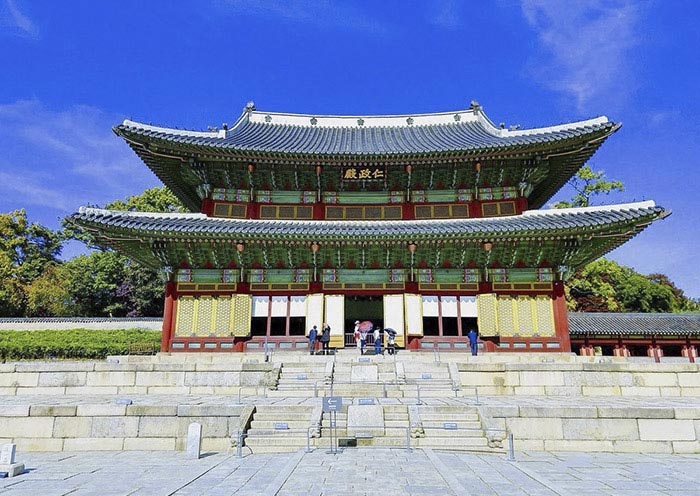
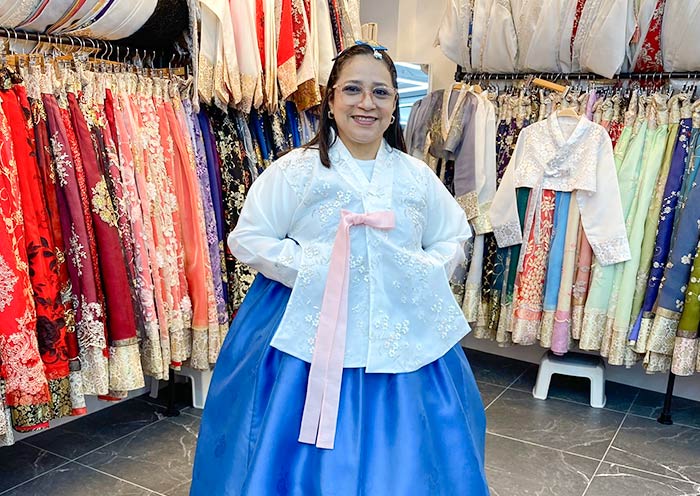
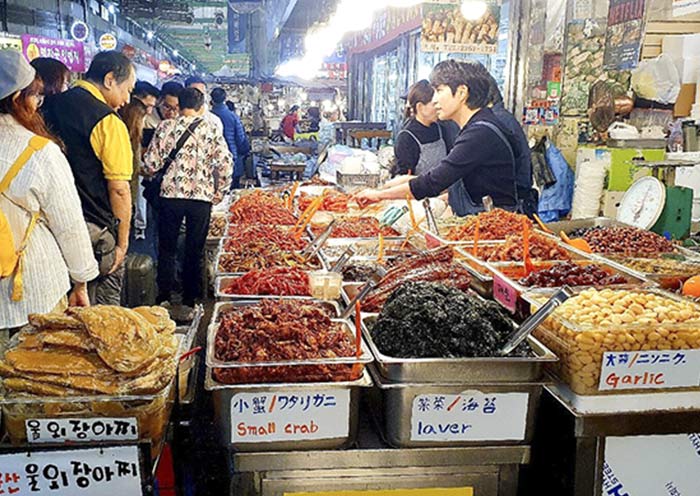
On this day, it is time to end your 8 Days South Korea Tour. You will be escorted to the airport based on your schedule for your flight to next destination.
Thank you for choosing Asia Odyssey Travel for your tour of Asia. We are dedicated to enhancing your travel experiences and look forward to welcoming you on your next adventure in Asia. Have a safe journey home!
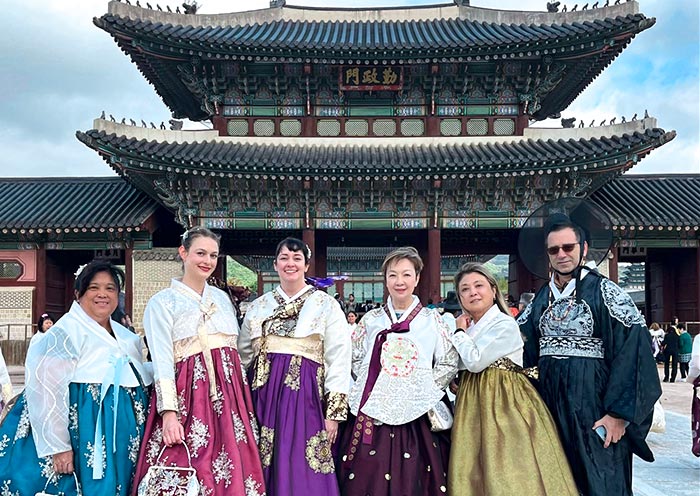
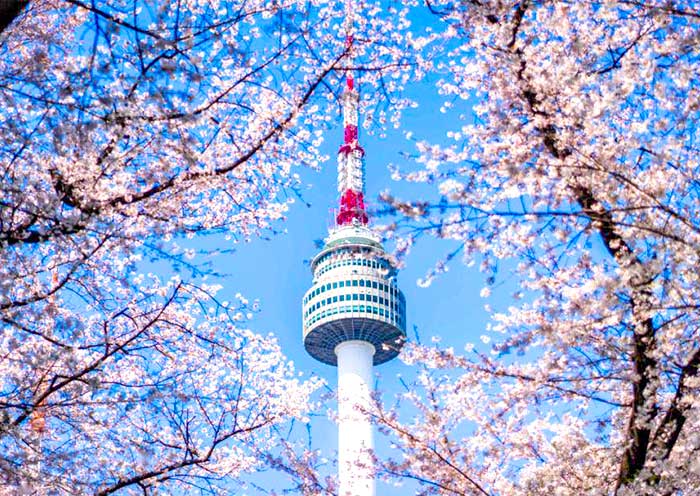
Price: What’s Included & What’s Excluded
What's Included:
What's Excluded:
Important Travel Tips for Visiting South Korea
Normally, you need to apply for a visa to visit South Korea. Typically, you would apply for a tourist visa at a South Korean embassy or consulate in your home country. However, there is also a visa-free policy for South Korea. The country has a visa waiver program that enables nationals of certain countries to enter South Korea for tourism or short-term visits without the need for a visa in advance. Additionally, South Korea offers an Electronic Travel Authorization (ETA) system for travelers from select countries, allowing for online authorization before travel. The ETA permits stays of up to 90 days for tourism or business purposes.
For more detailed visa information regarding travel to South Korea, please reach out to our travel expert.
South Korea experiences four distinct seasons: spring, summer, autumn, and winter.
- Winter (December - February): Very cold, especially in Seoul and northern areas, with temperatures dropping below freezing. Pack warm clothing.
- Spring (March - May): Mild weather, but bring layers as temperatures can vary.
- Summer (June - August): Hot and humid, with a monsoon season in July. Light clothing and umbrellas are essential.
- Autumn (September - November): Cool and dry, a popular time to visit for the beautiful fall foliage.
Spring (March to May) and Autumn (September to November) are widely regarded as the best times to visit South Korea due to their mild temperatures, beautiful natural scenery (cherry blossoms in spring and fall foliage in autumn), and numerous cultural festivals.
For traveling between cities like Seoul and Gyeongju or Busan, the KTX (Korea's high-speed train) is the best option. If you're traveling from Seoul to Gyeongju with a stop in Andong, a private car is more convenient. For trips between Seoul or Busan and Jeju Island, flying is the most common and efficient way.
- Language: Korean is the main language: English is limited, especially outside big cities.
- Currency: Korean Won (KRW). Credit cardsare accepted widely, but carry some cash for small shops.
- Dining: Chopsticks: Practice using metal chopsticks, as they are common in restaurants.Shared meals: Many Korean dishes are shared at the table.Spicy food: Be ready for spicy dishes like kimchi and tteokbokki.
- Hanbok: Rent traditional Korean clothing and visit Gyeongbokgung Palace for free.
Hotel Conditions for Your South Korea Tour
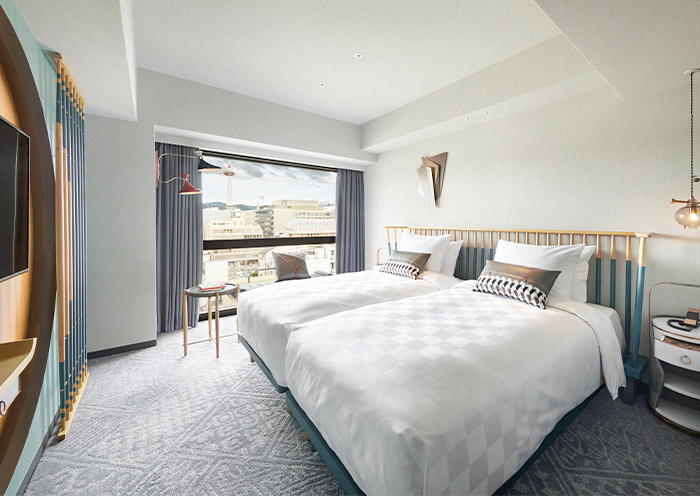

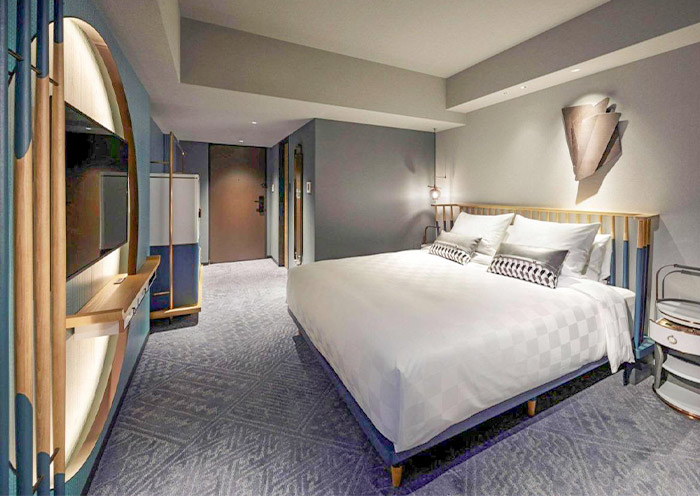
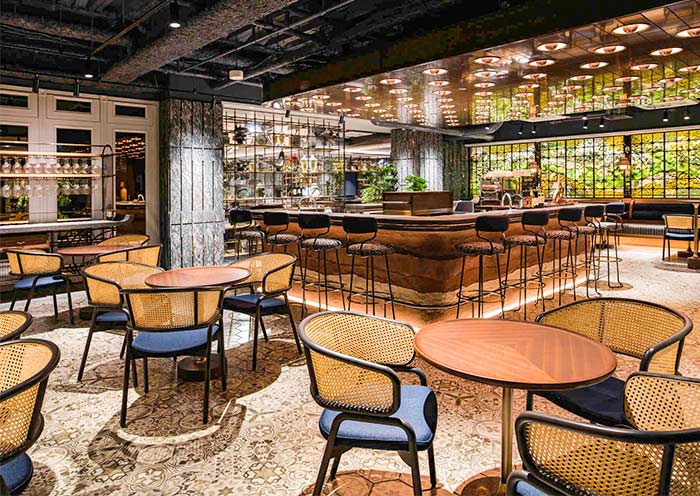
For your South Korea tour, we offer a range of accommodation options to suit various preferences and budgets: luxurious 5-star hotels, comfortable 4-star hotels, and economical 3-star hotels. Our selected hotels in South Korea, such as those in Seoul, Busan, and Jeju Island, are conveniently located close to the city center or popular tourist spots.
In Seoul, you can choose to stay in Myeongdong, Insadong, Gangnam, Itaewon, and Dongdaemun, all offering various access points to the city's main attractions. In Busan, popular areas include Haeundae Beach, Gwangalli Beach, and Seomyeon for easy access to both the beach and shopping/entertainment areas. On Jeju Island, Jeju City (near the airport) and Seogwipo (near major attractions like waterfalls) are the most popular areas.
If you have any specific requirements or preferences regarding your accommodation in South Korea, please feel free to contact our travel experts.
Photo Gallery for This Itinerary
Latest South Korea Tours Reviews from Our Customers

Viktoriya Kozlova
Spain
Viktoriya, Paul, Larisa and Alexander
Destination(s): Taiwan
Date of Experience: Mar 05, 2025
Tour Customized by: Kiarra
You May be Interested in This Tour: Customized Tour

Wong Xin Min
Singapore
Date of Experience: Mar 15, 2025
Tour Customized by: Isaac
You May be Interested in This Tour: 10 Days South Korea Panoramic Tour: History, Culture, Nature & Cityscape

Emily
Australian
Date of Experience: Mar 09, 2025
Tour Customized by: Allan
You May be Interested in This Tour: 8 Days South Korea UNESCO Tour: Seoul, Andong, Gyeongju, Busan with Jeju Island
Price: Request
(Based on a private tour for two people. Price varies depending on program, travel date, number of people.)
Free Enquiry! You don’t need to pay for the reservation.
- United States (+1)
- Australia (+61)
- Singapore (+65)
- Malaysia (+60)
- Philippines (+63)
- Canada (+1)
- Italy (+39)
- Indonesia (+62)
- United Kingdom (+44)
- Spain (+34)
- Mexico (+52)
- Hong Kong (+852)
- Thailand (+66)
- United Arab Emirates (+971)
- New Zealand (+64)
- South Africa (+27)
- Germany (+49)
- Brazil (+55)
- India (+91)
- France (+33)
- Vietnam (+84)
- The Netherlands (+31)
- Saudi Arabia (+966)
- Ireland (+353)
- Argentina (+54)
- Switzerland (+41)
- Romania (+40)
- Pakistan (+92)
- Japan (+81)
- Portugal (+351)
- Bangladesh (+880)
- South Korea (+82)
- Puerto Rico (+1)
- Türkiye (+90)
- China (+86)
- Belgium (+32)
- Qatar (+974)
- Greece (+30)
- Taiwan (+886)
- Austria (+43)
- Poland (+48)
- Israel (+972)
- Chile (+56)
- Sri Lanka (+94)
- Nigeria (+234)
- Peru (+51)
- Colombia (+57)
- Hungary (+36)
- Nepal (+977)
- Denmark (+45)
- Bulgaria (+359)
- Norway (+47)
- Slovenia (+383)
- Sweden (+46)
- Kuwait (+965)
- Costa Rica (+506)
- Ecuador (+593)
- Venezuela (+58)
- Malta (+356)
- Croatia (+385)
- Tunisia (+216)
- Czechia (+420)
- Mongolia (+976)
- Bahrain (+973)
- Mauritius (+230)
- Papua New Guinea (+675)
- Cambodia (+855)
- Dominican Republic (+1)
- Luxembourg (+352)
- Finland (+358)
- Guatemala (+502)
- Myanmar (+95)
- Maldives (+960)
- Slovakia (+421)
- Laos (+856)
- Serbia (+381)
- Brunei (+673)
- Oman (+968)
- Macao (+853)
- Panama (+507)
- Morocco (+212)
- Jordan (+962)
- Georgia (+995)
- Fiji (+679)
- Bolivia (+591)
- Lithuania (+370)
- Bahamas (+1)
- Cyprus (+357)
- Latvia (+371)
- Bhutan (+975)
- Iraq (+964)
- Iran (+98)
- Kenya (+254)
- Jamaica (+1)
- Zimbabwe (+263)
- Azerbaijan (+994)
- Uruguay (+598)
- Estonia (+372)
- Andorra (+376)
- Cameroon (+237)
- Ghana (+233)
- Kazakhstan (+7)
- Nicaragua (+505)
- Egypt (+20)
- Russia (+7)
- Albania (+355)
- Réunion (+262)
- Montenegro (+382)
- Algeria (+213)
- Afghanistan (+93)
- Martinique (+596)
- Uganda (+256)
- Honduras (+504)
- North Macedonia (+389)
- Trinidad and Tobago (+1)
- Suriname (+597)
- Antigua and Barbuda (+1)
- Zambia (+260)
- Ukraine (+380)
- Armenia (+374)
- Barbados (+1)
- Belarus (+375)
- Palestine (+970)
- Lesotho (+266)
- Moldova (+373)
- Ethiopia (+251)
- French Polynesia (+689)
- Gambia (+220)
- Guam (+1)
- Gibraltar (+350)
- Isle of Man (+44)
- New Caledonia (+687)
- El Salvador (+503)
- Comoros (+269)
- Seychelles (+248)
- Chad (+235)
- Samoa (+685)
- Cook Islands (+682)
- Palau (+680)
- Paraguay (+595)
- DR Congo (+243)
- Solomon Islands (+677)
